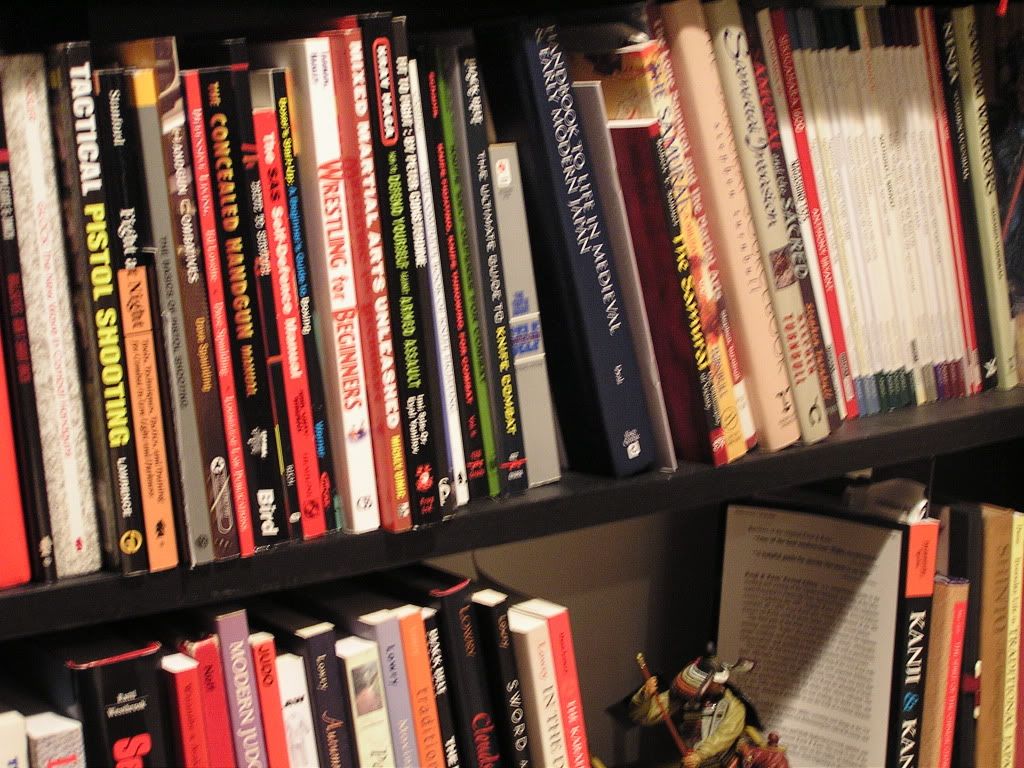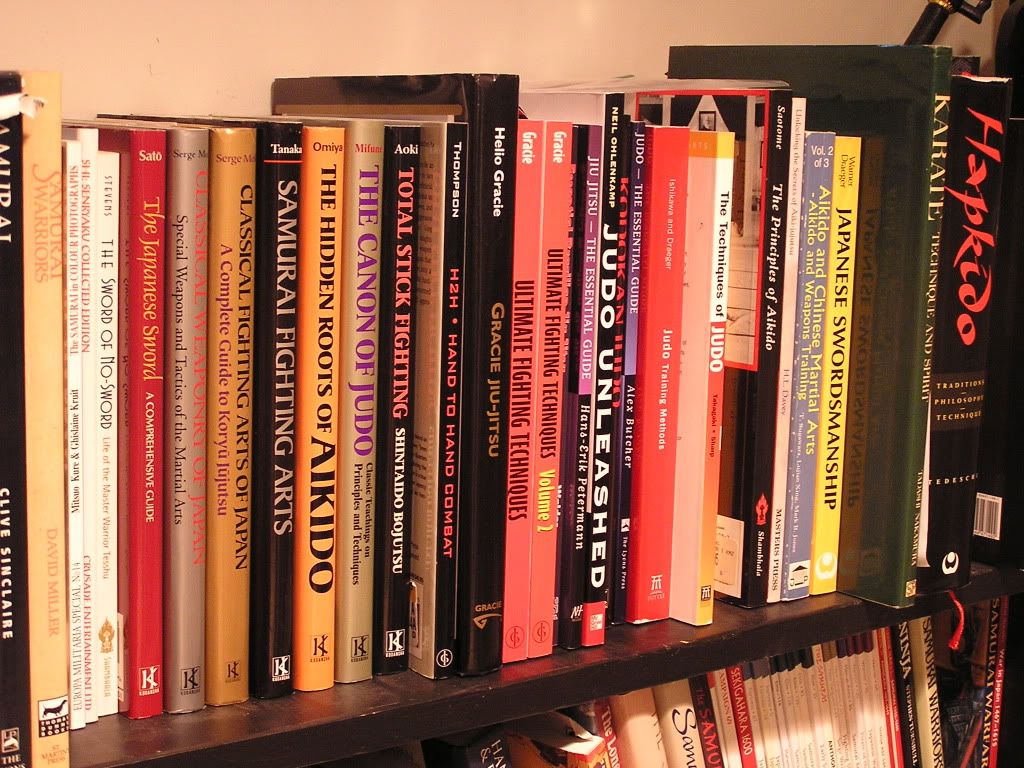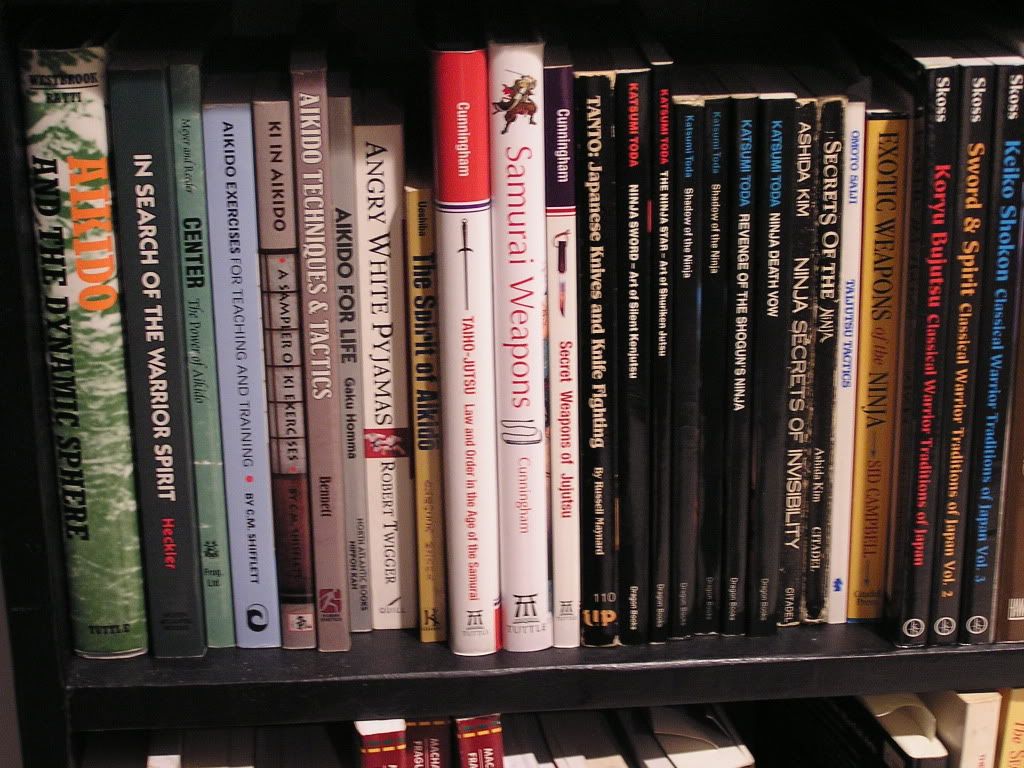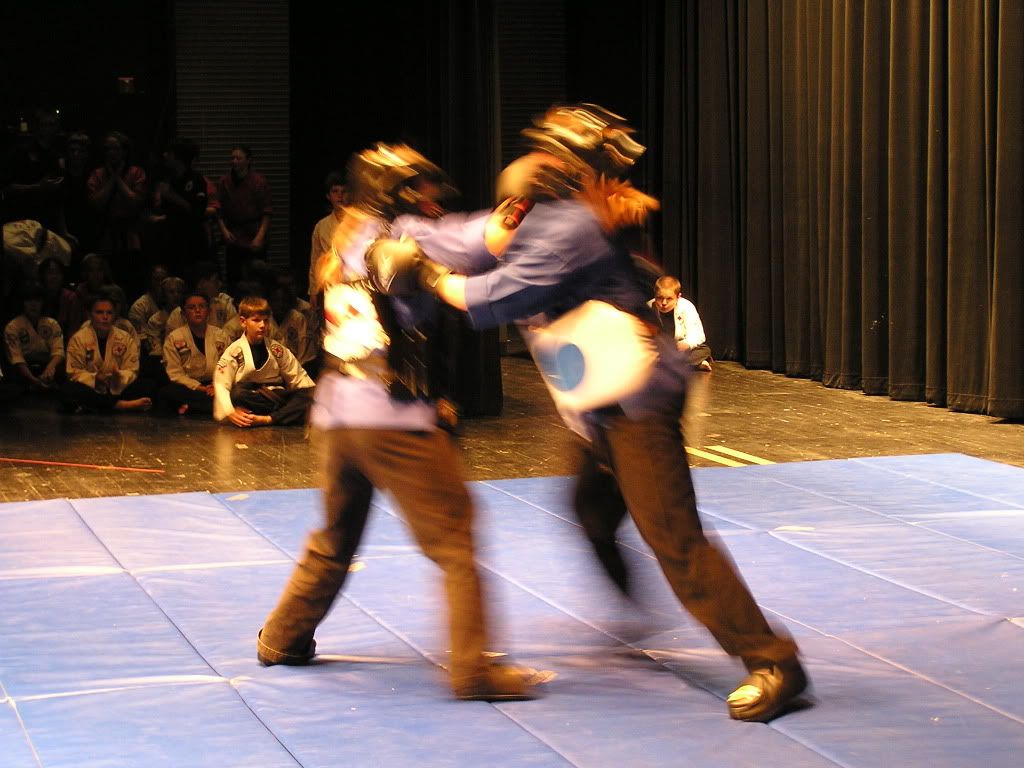
He Who Shall Not Be Named, or HWSNBN, presented his Togakure Ryu seminars at our dojo recently. His first seminar covered basic information about Togakure Ryu and the Santo Tonko no Gata. The second seminar was presented to yudansha students and covered the kyoketsu shoge, an unusual weapon closely associated with the Togakure Ryu.
HWSNBN began with an informal lecture on various aspects of Togakure Ryu Ninpo. He listed the three special tools of the school:
Senban Shuriken
Shuko, or hand claws; and
Shinodake, a primitive snorkel or breathing tube.
He listed the six traveling tools of the ninja:
The straw hat,
A slate pencil,
Medicine,
A staff,
A fire starting kit; and
A 3 foot square towel
HWSNBN pointed out that it is not the specific tools that are important to us in the 21st Century, so much as the idea that the historical ninja maintained a kit of essential supplies – and was prepared.
He touched on some of the stealth aspects of the ninja, such as various breaking and entering tools, and the clothing. Although just about everyone in America is familiar with the black ninja suit, or shinobi shozuko, HWSNBN explained the limitations of black as a camouflage color. According to him a mid-tone gray, or “maroon” was best. He stumbled over the maroon before eventually saying “rust” to describe the shade he was trying to describe. Personally, based on other sources of information, I think “rust” may be the best choice for the color he is describing.
Then we did kata. HWSNBN did not give a precise, step-by-step on all nine kata. He showed a one-on-one kata, then the kata versus two Uke, and finished with the kata versus four Uke surrounding the Tori. He was far more interested in the proper feeling than the script. At one point he told us that the way the kata are scripted, and even shown on various videos, is NOT the way the shihan show it in Japan. They are not as rigid as the script.
In the single Uke kata, the idea was to match movement with the Uke. Tori needs to be smooth in order not to resist Uke’s pulls. The goal is to avoid adding extra energy to the encounter, but to get Uke to relax and believe he is in control. If Tori adds energy, he reveals his intentions too soon.
A question arose about whether this idea of concealing intentions was related to “mu” or “no mind” often cited in modern martial arts (gendai budo). Shouls Tori have a feeling of mu to avoid adding energy? HWSNBN does not believe it is possible to clear your mind of all thoughts – or you’d be dead. Instead, he says his concept of “still mind” is “don’t anticipate the outcome, and focus on the task at hand.”
[An aside that might be worth your research… Mu is a concept drawn from Zen Buddhism. The Bujinkan schools are connected to Mikkyo Buddhism, not Zen. So “Mu” is really a foreign concept to our arts.]
Another suggestion from HWSNBN is to be less “martial artsy” about the technique. Try to conceal your skills.
The next kata was an unarmed Tori versus two Uke closing in with bokken. The idea is simple enough: Tori needs to maneuver the Uke into position, fix them in place by throwing metsubishi, then escape. Practicing this form required some space, so we took turns doing the kata. I attempted to be Tori early in the session, and I met with limited success. I didn’t get whacked by the bokken, but I didn’t feel as if I owned the situation. I did have an excellent opportunity to observe while others did a far better job as Tori.
This kata is fundamentally the same as sparring against two people. The bokken change the threat and the distance, but it is still the same principles in action.
I did not attempt the four man escape, but watched several others gamely try. Not all were successful. HWSNBN commented that the people who were able to break out of the encirclement all performed some unusual action that caused the Uke to pause. Part of the kata is to use metsubishi to temporarily blind some of the Uke and shuriken to attack the others. HWSNBN was drawing attention to the moment just before Tori throws the metsubishi, the successful ones captured the Ukes’ full attention at precisely that moment, and then disrupted their ability to adjust in the next beat. I’m still pondering what I saw, but I believe this may be the first example of kyojutsu that I have consciously witnessed.

In the evening, the yudansha among us were treated to a special session on the kyoketsu shoge. HWSNBN explained the weapon’s various parts: a hooked spearhead broken off a shaft and modified into a dagger, a heavy iron ring, and a connecting rope. He showed a “secret” method of retaining the dagger end; which, like most martial arts secrets was mostly common sense.
He basically said the shoge was not one of his favorite weapons, and believes it is primarily of historical value. Nevertheless, we were all paired off and sparred shoge versus a shinai. HWSNBN had given some one sentence advice about using good taijutsu which I tried to heed. It seemed to work, and I discovered that if I kept good distance, and didn’t twirl the weighted end so that it was constantly ready as a threat, I could be pretty successful with the tool. Glancing around, I could tell everybody who had trouble wasn’t using distance to their advantage and didn’t understand that twirling the weight gave up timing to their opponent.
One of the themes HWSNBN wove through both seminars is his understanding of the ninja imperative: “I must do whatever is required to keep my enemy from learning my identity and escape.” If the enemy does learn your identity, then you and your entire family will be killed. It is absolutely critical that they do not learn who you are. Interestingly, in the variations of the single person kata, I found it was often possible to move in such a way that your face was not fully visible to the Uke. Escape was always emphasized in the kata. There was never a moment when Tori slugged it out with Uke, and if he saw you spending too much time fighting the Uke, HWSNBN let you know you were doing it wrong.
HWSNBN also stressed the importance of natural movement. Always smooth out the actions. Never look like you know martial arts. Just move where you need to be.
This is my report on the seminars. The rest is for my notes and those who were there.
 This is one of Hasbro's most recent Snake Eyes action figures, with his sword-brother Storm Shadow.
This is one of Hasbro's most recent Snake Eyes action figures, with his sword-brother Storm Shadow.
 This is my "semi-custom" Snake Eyes action figure. The base figure is, in fact, a 12" Hasbro Snake Eyes; so the headsculpt was relativly easy. The other parts came from various manufacturers, which I put together to get this effect. The jumpsuit, for instance, is a wetsuit from a SEAL figure. I did have to get some modeling tape to make the Arshikage/I-Ching symbol on the shoulder. I based the figure off the comics... You'll note the simularities between my version, and the movie costume.
This is my "semi-custom" Snake Eyes action figure. The base figure is, in fact, a 12" Hasbro Snake Eyes; so the headsculpt was relativly easy. The other parts came from various manufacturers, which I put together to get this effect. The jumpsuit, for instance, is a wetsuit from a SEAL figure. I did have to get some modeling tape to make the Arshikage/I-Ching symbol on the shoulder. I based the figure off the comics... You'll note the simularities between my version, and the movie costume. Mmmm... More Snake Eyes goodness from the movie... There are some subtle differences between the equipment here and the equipment in the first pic I posted.
Mmmm... More Snake Eyes goodness from the movie... There are some subtle differences between the equipment here and the equipment in the first pic I posted.
















